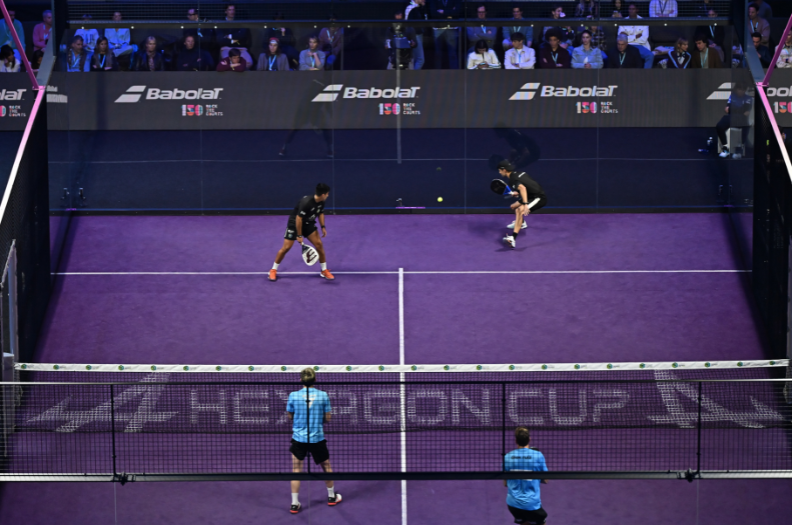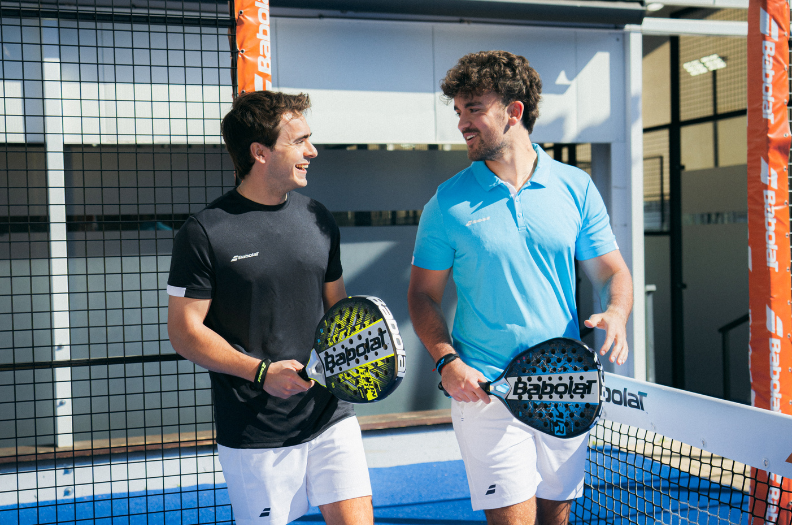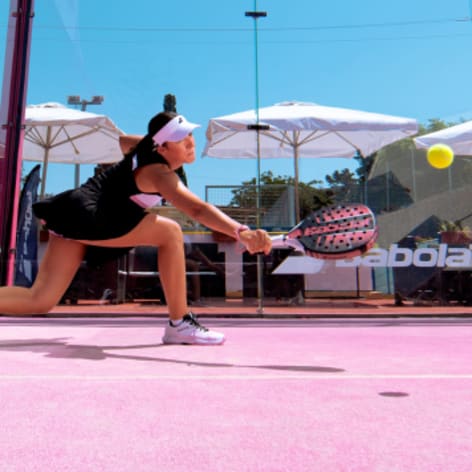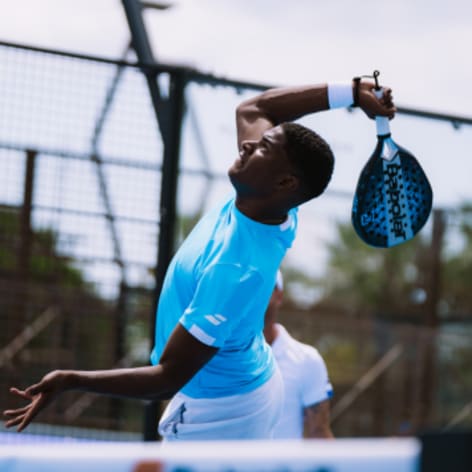Padel is gaining popularity and attracting more and more players, especially former tennis players curious to discover this dynamic sport. If you’re about to step onto your first padel court, understanding the essential rules will allow you to fully enjoy your first matches.
The basics of padel to get started
Before playing your first game, let’s look at the fundamental elements that make padel unique.
The padel court and its features
A padel court measures 20 meters long by 10 meters wide. This rectangular surface is divided into two halves by a net that is 88 cm high. The unique feature of padel lies in its glass and mesh walls, which surround the court at a height of 3 to 4 meters.
Each side has a service box marked by a line 6.95 meters from the net. The back walls are made of 3-meter-high glass panels, extended by mesh fencing. This unique setup allows for tactical opportunities impossible in other racquet sports.
Equipment: racquet and balls
A padel racquet is shorter than a tennis racquet and has no strings. It has a solid surface with perforated holes and weighs between 350 and 390 grams. Wearing the wrist strap is a key safety rule. When choosing the right grip for your racquet, take your hand size into account.
How does a padel match work?
Scoring system
The scoring system in padel is identical to tennis: 15, 30, 40, and game. To win a set, a team must win 6 games with at least a 2-game lead. If the score reaches 6-6, a 7-point tie-break is played. A match is usually played as the best of 3 sets. Players change sides when the total number of games is odd, ensuring fairness with court conditions.
Doubles only
Padel is played exclusively in doubles. Each team has two players who must coordinate their movements. Communication between partners is essential, especially for high balls where both players may attempt to hit.

The underhand serve
Server’s position and rules
The server must stand behind the service line. The underhand serve requires the ball to bounce on the ground before being struck at or below waist height. The serve is diagonal, directed toward the opponent’s opposite service box.
After bouncing, the ball must clear the net and land in the correct box. It may touch the glass walls after its first bounce, but never the mesh directly. The server has two attempts.
Common serving faults
The most frequent fault is hitting the ball above waist height. Another fault occurs if the ball doesn’t land in the correct service box or directly hits the mesh. After two consecutive faults, the point is lost.
Playing with the glass walls
Using the walls and mesh
The glass walls are an active part of the game. After bouncing on the ground, the ball may hit the glass and still be in play. The mesh fencing is different: if the ball hits it directly after being struck, the point is lost.
Players can use their own back glass walls to return the ball, allowing for spectacular shots.
Authorized and prohibited bounces
A valid bounce occurs when the ball first touches the ground, then the glass. The ball can even bounce off several walls in succession. Illegal rebounds include direct contact with the mesh or the ceiling.
Main faults that lose the point
The most common beginner mistake is touching the net with the racquet or body. Other frequent faults include double-hitting the ball or hitting it before it crosses into your side.
A padel-specific fault: you may not reach over the net to strike the ball, unless your natural swing carries you over after making contact on your side.

Basic positioning and tactics in doubles
The basic formation places both players side by side. On offense, position yourselves 2–3 meters from the net. On defense, move back together close to the glass walls. Communication is key, using clear calls like “mine,” “yours,” or “leave it.”
Strategy focuses on advancing to the net together to dominate, then retreating together when facing a lob. This synchronization separates strong teams from beginners. Choosing the right overgrip becomes important during long rallies.
Key differences between padel and tennis
Although padel and tennis share similarities, their differences make them two distinct sports. The underhand serve, less dominant, encourages longer rallies. The smaller court (200 m² compared to 648 m²) makes play more intense.
The use of walls transforms tactics: a ball can come back into play off the glass, creating counterattacks impossible in tennis. Doubles-only play develops collective skills: communication, synchronization, and shared responsibility.
The equipment also differs: solid racquets generate less power but more control. These features make padel more accessible while offering rich tactical depth for those eager to progress in this exciting sport.






